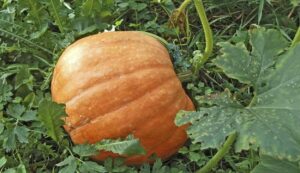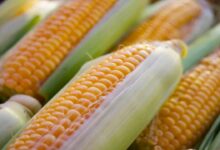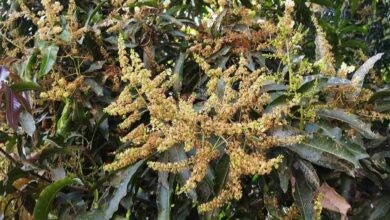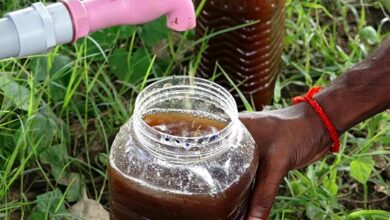This disease kills pumpkin vegetables; know the symptoms and prevention
Pumpkin Cultivation: In order to generate a decent income quickly, the majority of Indian farmers are switching from conventional to non-traditional farming. Cucurbitaceous crops, such as cucumber, gourd, ridge gourd, and pumpkin, are what the majority of these farmers choose to grow. Growing cucurbitaceous vegetables is a fantastic way to acquire a lot of produce at a cheap cost and make more money for the farmer.

However, bacterial wilt disease may lower yields in cucurbitaceous vegetable crops. Melon, cucumber, pumpkin, squash, and other cucurbitaceous crops are all susceptible to the destructive disease known as bacterial wilt. Cucumber beetles are the primary vectors of this illness, which is brought on by the bacteria Erwinia tracheiphila.
This illness may result in a large yield loss if it is not properly controlled. Tell us about bacterial wilt disease’s causes, symptoms, and different treatment options.
Causes of Cucurbitaceous Vegetable Bacterial Wilt Disease
Erwinia tracheiphila is the bacterium that causes bacterial wilt. The infection is carried in the stomach of striped or spotted cucumber beetles, which are the main vectors of transmission. These beetles infect plants by depositing bacteria in their vascular systems while feeding on cucurbits. Within the plant, the bacteria proliferate quickly, obstructing the passage of nutrients and water by clogging vascular tissues.
Cucurbit Bacterial Wilt Symptoms
Depending on the cucurbit type, bacterial wilt may present with a number of symptoms, but wilt is a typical one that often begins on a single vine or leaf. In warmer weather, this withering is often more apparent. Plant failure results from the wilt spreading throughout the plant as the illness worsens. With dark, dried leaves, vines may have a distinctive “burnt” look. In extreme situations, plants perish in a matter of days.
Control of Cucurbit Bacterial Wilt Disease
Bacterial will must be effectively managed to avoid significant financial losses. Growers may use a number of tactics to manage this disease, including…
1. Rotation of crops
One essential technique to lower the danger of bacterial wilt is crop rotation. Since the bacteria may linger in the soil for years, it is best to avoid growing cucurbits in the same spot for at least two years.
2. Types of Resistance
Certain types of melon, pumpkin, and cucurbit have been created to withstand bacterial wilt. Verifying the resistance status of resistant cultivars is essential, yet using them might be a successful tactic.
3. The use of Trap Crops
Keep cucumber bugs away from the main crop by planting trap crops like Blue Hubbard squash or variations that are very appealing to them.
4. Cucumber Beetle Control
Cucumber beetle control measures should be implemented. This involves using natural predators like parasitic wasps, row coverings, and pesticides.
Use pesticides to manage beetles. Integrated pest control works effectively with fast-acting pesticides.
When pollinators are not as active, apply pesticides to crops. Early in the morning or late at night. Neem oil, or items that contain its active component, azadirachtin, has dual functions as a pesticide and a feeding deterrent. Use pesticides like carbaryl, bifenthrin (premixed sprays), esfenvalerate, permethrin, and pyrethrins, which often have a short half-life and a short waiting time before harvest. Use pesticides according to the manufacturer’s directions to the letter.
5. Hygiene
As soon as diseased plants are identified, they should be removed and destroyed. This lessens the pathogen’s source.
6. Solarization of Soil
During the summer, solarization—which involves covering the soil with transparent plastic—helps lower the number of bacteria in the soil.
7. Control by Biology
Erwinia tracheiphila is destroyed by several helpful nematodes and microorganisms. The soil may be treated with these biological control agents.
8. IPM, or Integrated Pest Management
The best method for controlling bacterial wilt is often to use an integrated pest management (IPM) strategy that incorporates many treatment techniques.
9. Monitoring
Check your cucumber crops often for signs of bacterial wilt. Prompt implementation of control measures is facilitated by early detection.
10. Seedlings Free of Disease
Since diseased plants might spread the infection to your fields, make sure you begin with seedlings or seeds free of illness.
11. Forecasting Disease
If available, use disease forecasting algorithms to estimate the likelihood of bacterial wilt and adjust your preventative strategies appropriately.





